Before the end of the semester we would like to put our poster and video on our blog:
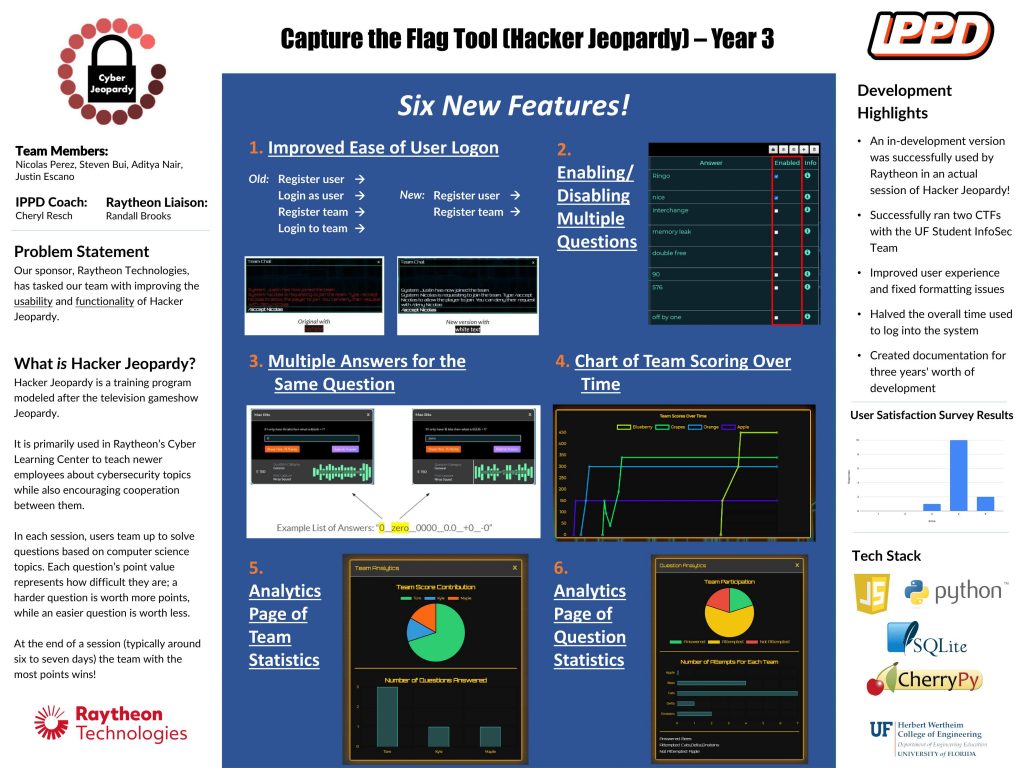
Thank you for reading our blog and thank you for joining us as we worked on the project.
Before the end of the semester we would like to put our poster and video on our blog:

Thank you for reading our blog and thank you for joining us as we worked on the project.
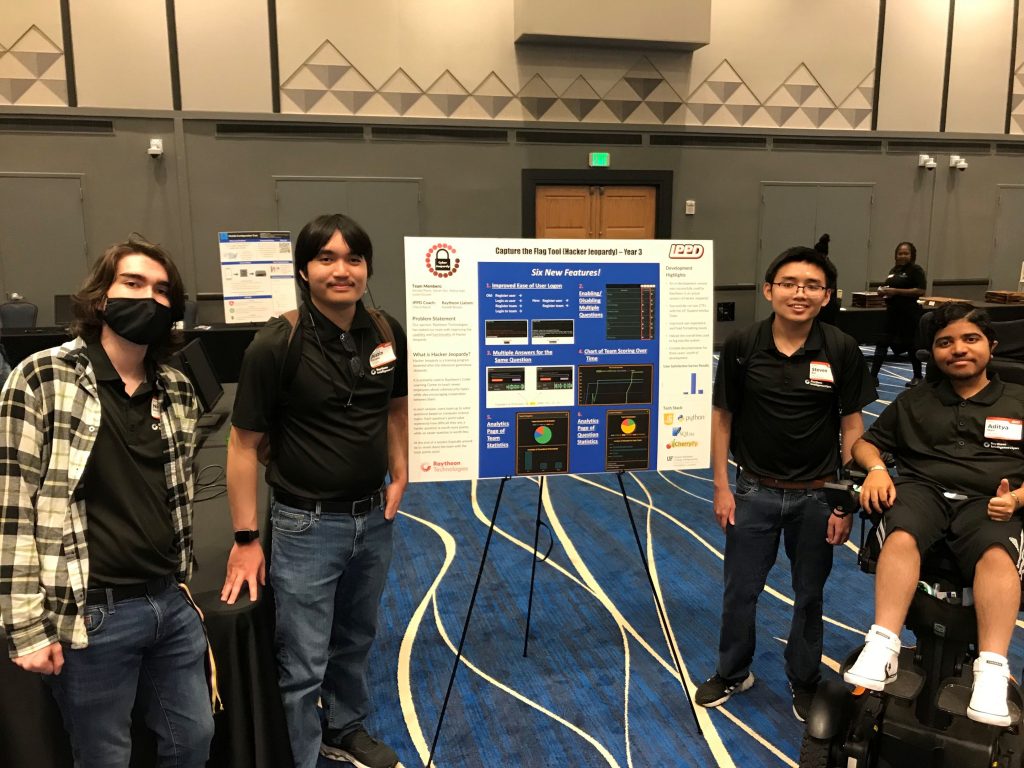
This week was the Final Design Review, where everything we’ve worked on for the past two semesters all culminates into one event. The presentational part of the event went incredibly well, we clearly went over the pitch, the aspects that we worked on, and what the future holds for Hacker Jeopardy. We were also able to see the complete states of two other projects in IPPD: Composite Guardian, and Reptile Repo. The supervisors from Raytheon were incredibly pleased with our work although our liaison couldn’t be here since they were on other business.
With the completion of the FDR event, this will be the final time our team posts on this blog, for the occasion we’ve decided to do one final sendoff from each of our perspectives:
Nicolas: Hi, I’ve actually been the main writer for the blog for this project, all the way from the beginning. It’s been an amazing experience working with this talented group of people, both my peers in this group, and working with the IPPD team, our coach, and with Raytheon. I’ve really gotten a lot out of this project, both from the documentation and hands-on work. I’m glad I was able to learn how to deal with legacy systems and how to use full-stack technologies and how they work. I’m proud of the work I’ve done and the work we’ve done together as a team, and I wish everyone the best of luck beyond IPPD!
Steven: IPPD was a great experience for me! I learned a lot throughout this past year and gained valuable experience that I can apply to my job in the future. My communication and presentation skills have improved significantly from working with my team for this class. This project also helped improve my resume and helped me find a job after graduation. My software engineering skills have also improved after working on this project and I feel much more comfortable working with a legacy codebase. I enjoyed the time I spent working with my team, our liaison Randall Brooks, and our coach Cheryl Resch. I am glad I did this program for my senior project!
Aditya: Hi everyone! I’ve had the pleasure of contributing to this incredible project in various ways. From assisting with documentation to lending a hand in programming, I’ve enjoyed collaborating with our highly skilled team, the IPPD staff, our coach, and Raytheon. I even had the opportunity to create a video showcasing the features we’ve implemented. It’s been an incredible journey learning how to navigate legacy systems and gaining hands-on experience with full-stack technologies. I’m proud of the work our team has accomplished together, and I wish everyone continued success beyond the IPPD program!
Justin: It’s been a great experience working with my team over the past year – I definitely think that our work in IPPD was far more involved and interesting than the standard set of CompSci senior projects, and I would not trade both the experience I gained and the experience in general for any other alternative. Even though I had a more supportive role on the team, I gained a lot of experience in creating and delivering presentations over these past two semesters, and I also improved my ability to revise and draft professional reports, which will certainly be useful in the future. All in all, I think Cyber Jeopardy did a great job – here’s to our future successes after our graduation on the 5th!
All of us would like to give a huge thank you to everyone would helped support our project with an especially huge thanks to our coach, Cheryl Resch, and our Raytheon liaison, Randall Brooks!
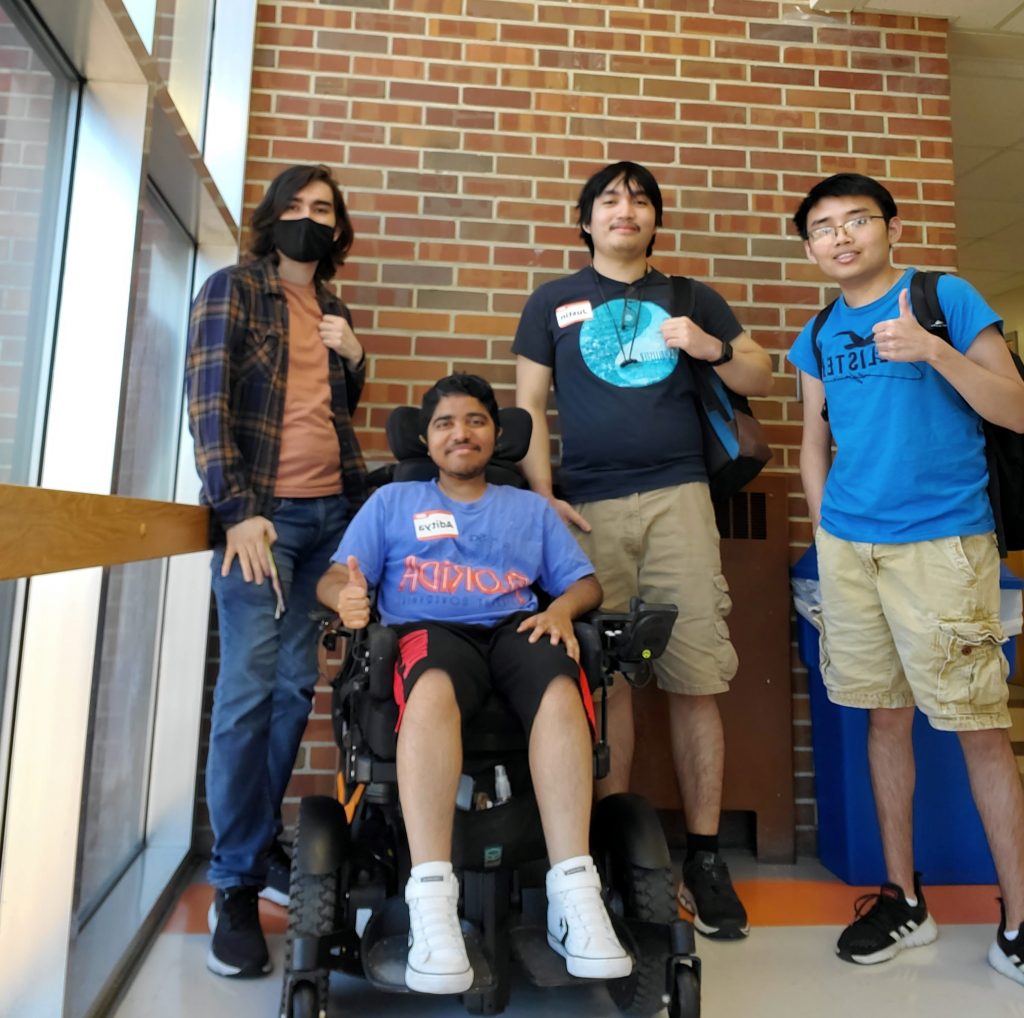
After all the work we’ve accomplished we’ve reached the end of the course. This week was the peer review for our FDR presentation. After putting a lot of work into the project as whole, it was great to see all our work coming together in the end.
Now that the peer review is finished we’re getting ready for the FDR, and getting as much done as we can before the clock runs out. We will be taking into account the comments from FDR and the time spent presenting. We hope that the work put into the project will be clear to see and that everyone enjoys our FDR presentation!
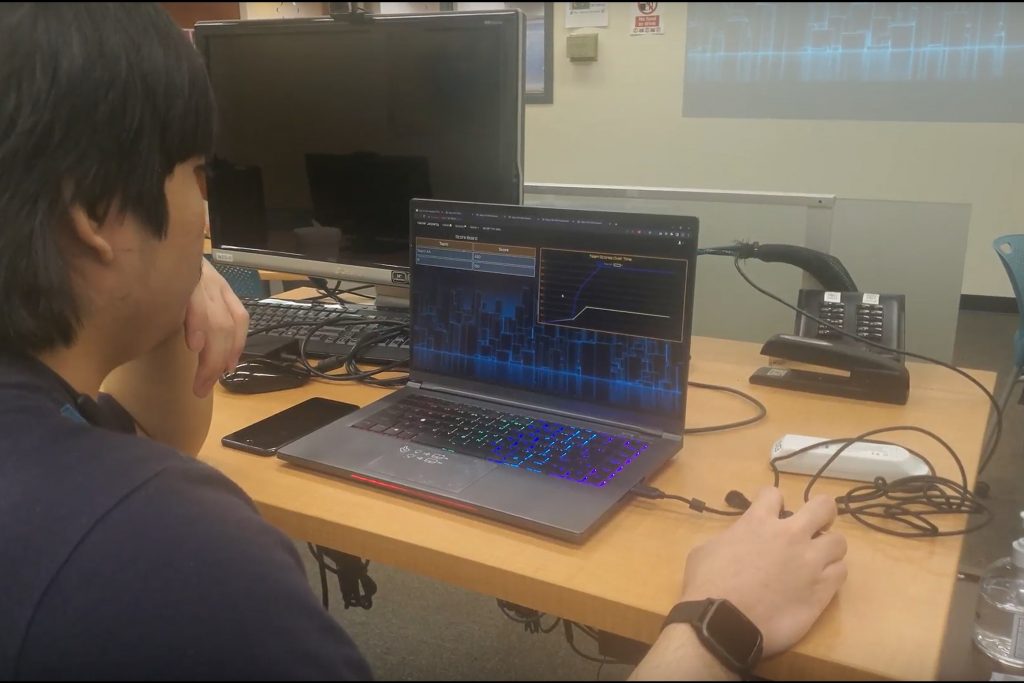
We teamed up once again with UF SIT to test out and get feedback on some of our changes to the system. We had a smaller turnout than the previous game, but their help was absolutely appreciated and was invaluable for understanding the system and it’s weaknesses. The results were mostly positive with negative aspects being outside our control such as the wording of the questions.
We also added the checkbox functionality to the questions page of the program to allow for easy enabling/disabling of questions as a whole. This will be the final functionality that will be added to the program, and was received incredibly well by our liaison since enabling/disabling questions took a large amount of time to do individually.
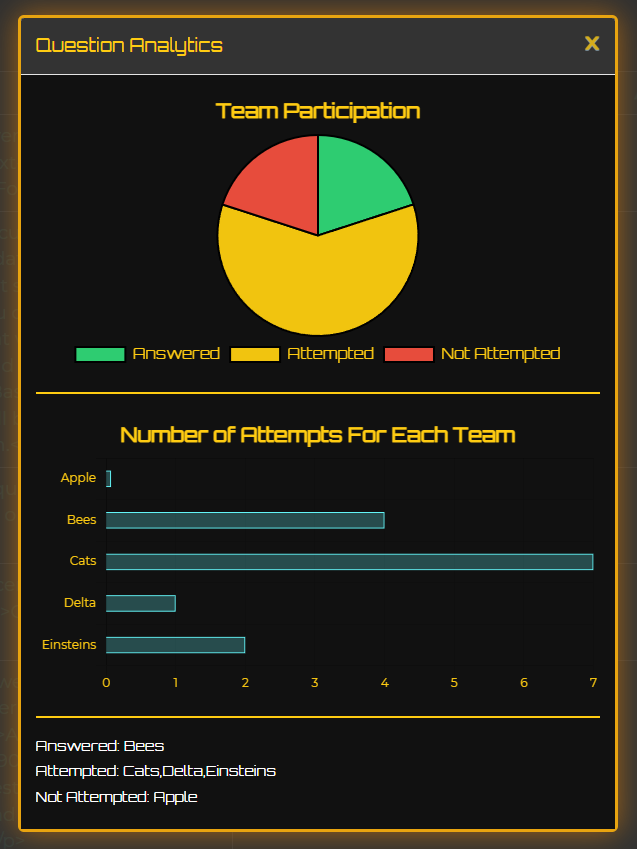
This week, we’ve begun our focus into getting ready for the FDR by working mostly on the outline, poster and video that will be presented for the final time in this class. The video work is on-going and will have our additions to the program front and center while still allowing those who are unfamiliar with the project to understand the work we did.
We also worked on adding some of the remaining requirements to the program. This includes the question analytics page to allow for easier understanding of the data, especially while the game is in progress. This works in the programs favor as the capstone to cybersecurity training.

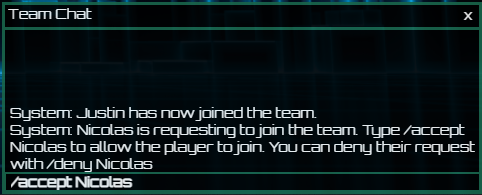

This week we reached the 2nd Prototype Inspection Day and were able to show the work we’ve put into the program the past few weeks. This includes showing the improved team score chart, changing it from the bar graph to the line graph that is easier to see and understand. This also increases the level of competitiveness from the teams by being able to see how the scores change over time. This also includes some additional graphs that are not implemented into the system, but are programmed into the Chart.JS JavaScript library. One of them is a chart that was previously shown on this blog, the individual analysis chart, with some modifications. In addition, we showed some changes that were based on the earlier mock test and the use of the program by our liaison. This included changing the colors on the team chat to allow for easier readability.
With the Prototype Inspection day having passed, we were able to get a lot of feedback on the project and in particular how to prepare our project to show the strengths of what we have done. The presentational feedback will be incredibly useful in our final showcase later this semester. Otherwise we got good feedback and that we are on track to finish this before the end of the class.
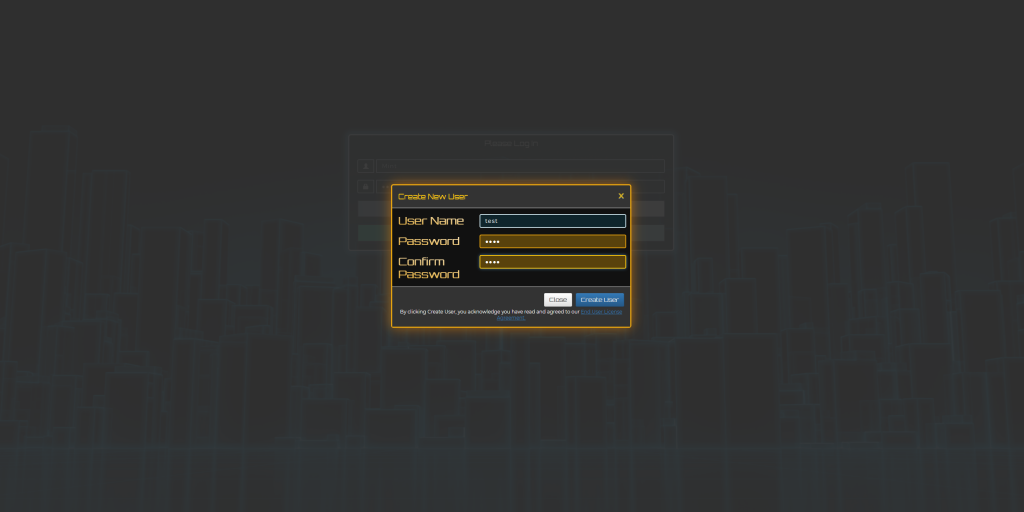
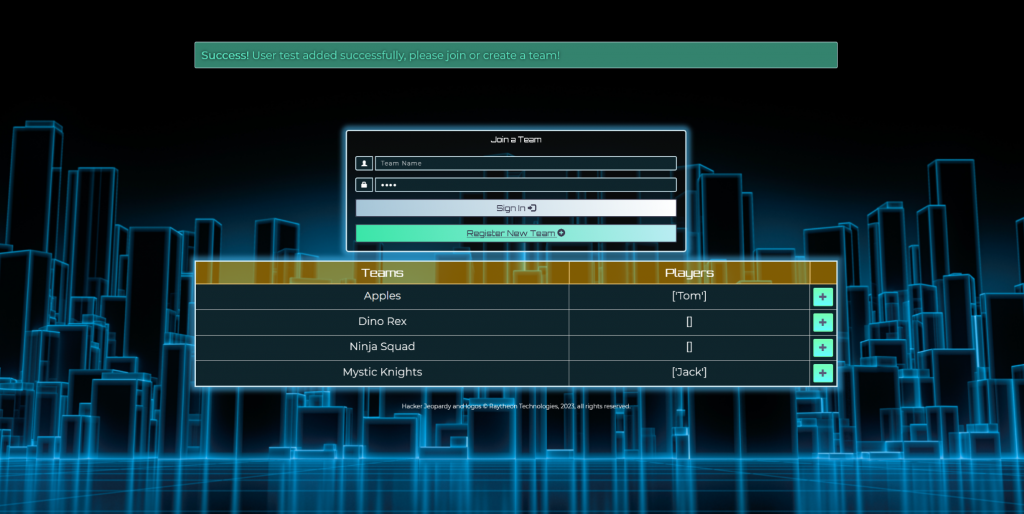
Removing the extra step from logging in was received positively
Now that Spring Break is over we’re getting ready for the Prototype Inspection Day. Since we got to test our application through a game of Capture the Flag in collaboration with UF Student Infosec Team, we got a lot of feedback that we plan to incorporate into the final product. In addition, our liaison was able to test out our current improvements to program by running a CTF of their own. They gave us even more feedback, and approval for the changes we’ve made so far.
We’ve also made changes the backend of the program, including adding an additional table to the SQL database which is necessary to make the changes we’re making first. We’ll be continuing working on these graphs and analysis page. We’ve also been continuing work on the documentation in preparation for the final deliverable.
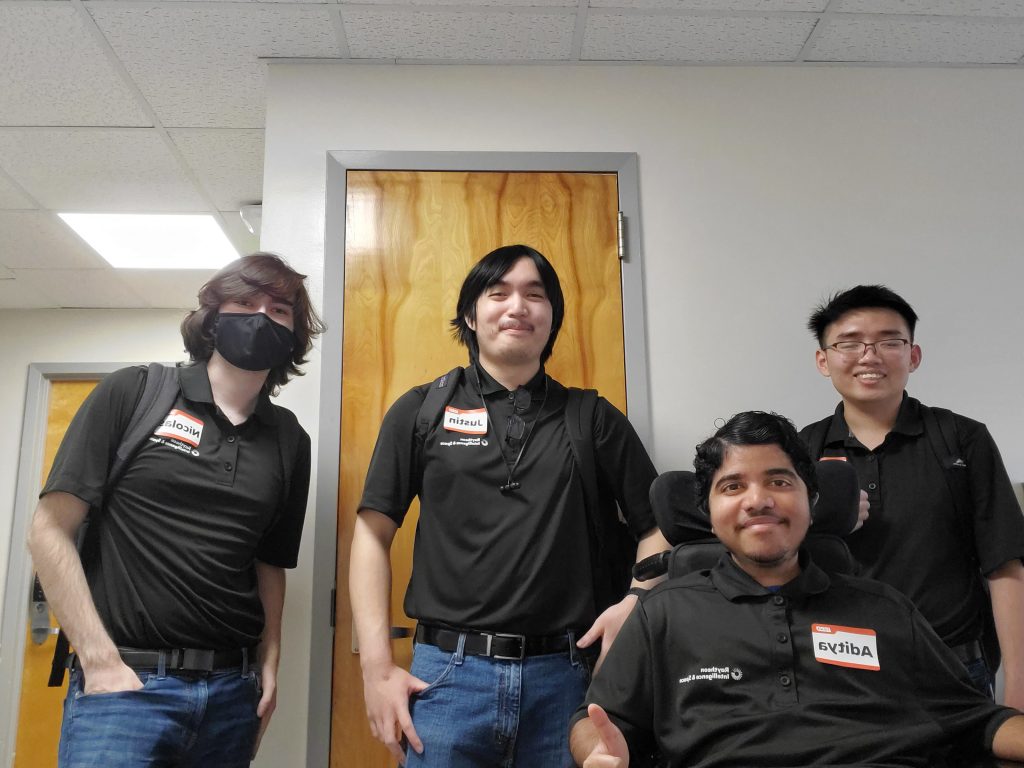
We’ve finished the 2nd QRB this week. It went incredibly well for us, with us being on track to finish the work ahead of us on time. We did get a good amount of feedback for us to work off. Our next steps are to get as much of the program finished before we have our mock CTF next week. We will hopefully have part of the analysis page implemented by then but that remains to be seen.
Now that we understand the frontend much more than we did at the end of QRB 1, we will be focusing on the backend to a much greater extent so that the frontend graphs, charts, and other additions will be more functional. This includes making the additional pages and reworking the teams scores over time chart.

This week we’ve been continuing work on the front-end with Chart.js including working on a bar graph for the teams scores. As a clarification, as planned the final version of the team scores chart will be a line graph showcasing the scores as they change over time. This iteration of the chart is to get work into implementing the chart into the actual program as a whole with the data currently available to us. Additionally, we’ve been working on the presentation for our 2nd QRB and the work associated with it. Including updating our TPMs, and adding more to our paper documentation.
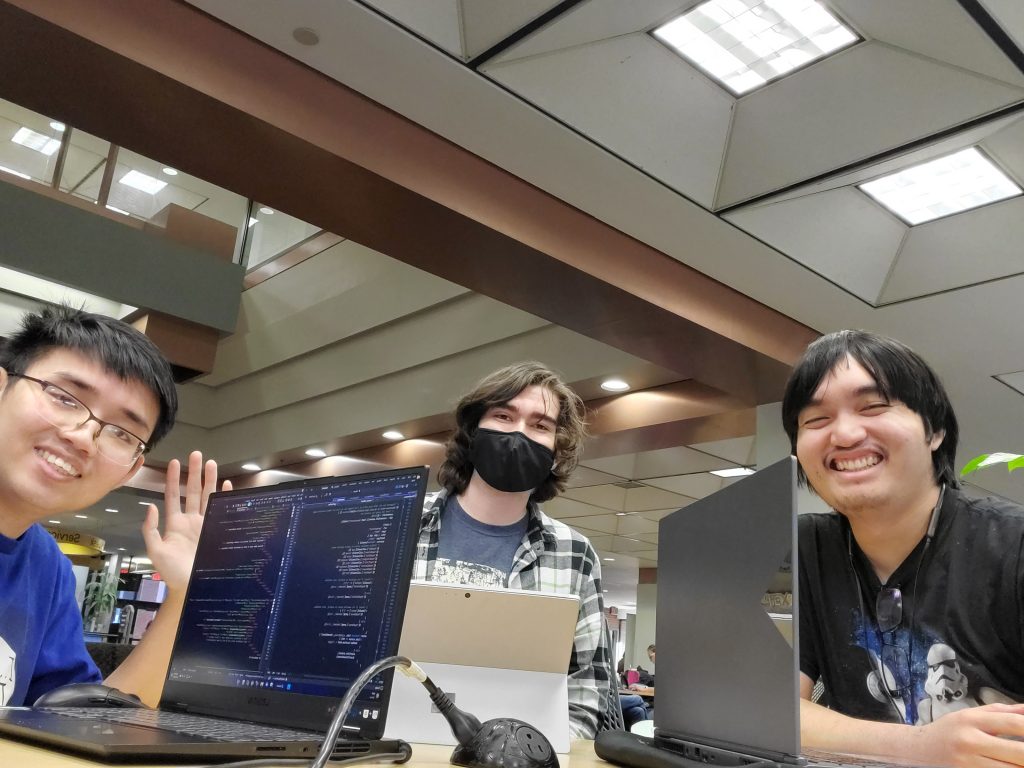
This week we carefully reviewing the existing code on the frontend to start implementing the chart from last week, and how to continue working on the features in general. The work and review was incredibly productive as we found out how information in the program was being passed between the frontend and the backend. Armed with this knowledge we split off into teams to handle the two parts of the program, and continue documenting discoveries we’ve made.
There is more we’ve learned about the front end, including finding more incomplete features and functions. There were also external libraries in the frontend code, some of which we already knew about while others were using sparingly such that it was hard to see those being used from the application itself. These libraries and their uses were also recorded. We should be able to use this new knowledge to add to the frontend of the application over the coming month.